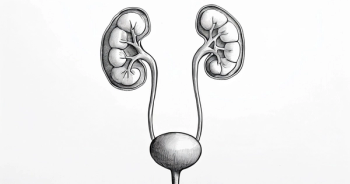
Targeted Therapies in Oncology
- June I 2025
- Volume 14
- Issue 7
- Pages: 50
Savolitinib Plus Osimertinib Elicits Durable Responses in MET+ Advanced NSCLC
Combination therapy with savolitinib and osimertinib shows promising results in treating advanced NSCLC with EGFR mutations and MET overexpression.
Savolitinib and osimertinib (Tagrisso) generated durable responses in patients with EGFR-mutated advanced non–small cell lung cancer (NSCLC) and MET overexpression or amplification who experienced disease progression on osimertinib monotherapy, according to data from the phase 2 SAVANNAH trial (NCT03778229).
Findings presented at the 2025 European Lung Cancer Congress showed that patients treated with the combination (n = 80) achieved a confirmed overall response rate (ORR) of 56% (95% CI, 45%-67%) per investigator assessment, comprising a complete response (CR) rate of 1% and a partial response (PR) rate of 55%. The median time to response was 6.1 weeks (IQR, 6.0-6.7), and the median duration of response (DOR) was 7.1 months (95% CI, 5.6-9.6).
Per blinded independent central review (BICR), the confirmed ORR was 55% (95% CI, 43%-66%), with respective CR and PR rates of 1% and 54%. The median time to response was 6.0 weeks (IQR, 5.76.6), and the median DOR was 9.9 months (95% CI, 6.0-13.7).
“Savolitinib at 300 mg twice daily plus osimertinib demonstrated a high, clinically meaningful, and durable response in the primary efficacy population by investigator and BICR assessment,” lead study author Myung-Ju Ahn, MD, PhD, of the Division of Hematology-Oncology in the Department of Medicine at Samsung Medical Center, Sungkyunkwan University School of Medicine, in Seoul, South Korea, said in a presentation of the data.
During the presentation, Ahn explained that MET amplification marks one of the most common acquired resistance mechanisms in EGFR-mutated NSCLC. Savolitinib is an oral, potent, highly selective MET tyrosine kinase inhibitor. The SAVANNAH study evaluated the agent in combination with osimertinib in patients at least 18 years of age (≥20 years in Japan) with locally advanced or metastatic NSCLC harboring EGFR mutations and centrally confirmed MET overexpression per immunohistochemistry (IHC) or amplification per fluorescence in situ hybridization (FISH). Disease progression on prior osimertinib was required, and patients had to have an ECOG performance status of 0 or 1. Notably, those with stable central nervous system metastases were allowed to participate.
During the first 6 versions of the trial protocol, patients who progressed on osimertinib in any line and were administered no more than 3 prior lines of therapy received savolitinib at 300 mg once per day plus osimertinib at 80 mg per day (n = 198); savolitinib at 300 mg twice per day plus osimertinib at 80 mg per day (n = 54); or savolitinib at 600 mg once per day plus osimertinib at 80 mg per day (n = 44).
In protocol 7, patients who had progressive disease following first-line osimertinib were randomly assigned 2:1 to receive savolitinib at 300 mg twice per day plus osimertinib at 80 mg per day (n = 48) or savolitinib at 300 mg twice per day plus placebo (n = 25).
The efficacy-evaluable population included in this analysis featured patients treated with savolitinib at 300 mg twice per day plus osimertinib at 80 mg per day in the first 6 protocols (n =32) and patients treated with the same regimen in protocol 7 (n = 48). All these patients progressed on first-line osimertinib and had a MET expression of IHC 3+ and/or FISH 10+. A preliminary analysis showed that 34% of patients enrolled in the study met these criteria.
Investigator-assessed ORR served as the trial’s primary end point. Secondary end points included BICR-assessed ORR; progression-free survival (PFS) and DOR by investigator assessment and BICR; overall survival; and safety.
In the efficacy-evaluable population, the median age was 66 years (range, 29-83); 70% of patients were female, and 71% were White. Sixty percent had an ECOG performance status of 1, and the remaining 40% had a performance status of 0. Forty-eight percent of patients were current or former smokers, and 39% had brain metastases at baseline. All patients had received 1 prior line of therapy. EGFR mutation type included exon 19 deletion (60%), exon 21 L858R mutation (38%), and other (9%).
Additional data demonstrated that the median PFS was 7.4 months (95% CI, 5.5-7.6), and the BICR-assessed median PFS was 7.5 months (95% CI, 6.4-11.3).
Regarding safety, any-grade, any-cause adverse effects (AEs) occurred in 99% of patients, and 57% experienced grade 3 or higher AEs. AEs proved fatal for 5% of patients, and serious AEs were observed in 31% of patients. AEs led to savolitinib discontinuation, dose reductions, and dose interruptions in 16%, 21%, and 48% of patients, respectively. AEs led to osimertinib discontinuation, dose reductions, and dose interruptions in 12%, 3%, and 41% of patients, respectively.
The most common AEs reported in at least 15% of patients comprised peripheral edema (grade 1/2, 48%; grade 3, 11%), nausea (43%; 2%), diarrhea (30%; 3%), vomiting (20%; 1%), dyspnea (16%; 3%), asthenia (17%; 3%), pyrexia (18%; 0%), fatigue (17%; 0%), back pain (13%; 2%), constipation (15%; 0%), cough (15%; 0%), and hypoalbuminemia (15%; 0%). Notably, grade 4 dyspnea was reported in 1% of patients.
REFERENCE
Ahn M, Kim TM, Bonanno L, et al. SAVANNAH: savolitinib (savo) + osimertinib (osi) in patients (pts) with EGFRm advanced NSCLC and MET overexpression (OverExp) and/or amplification (Amp) following progressive disease (PD) on osi. J Thorac Oncol. 2025;20(3)(suppl 1):S4-S5. doi:10.1016/ S1556-0864(25)00197-2
Articles in this issue
6 months ago
Nine Staff Management Essentials for Physicians








































